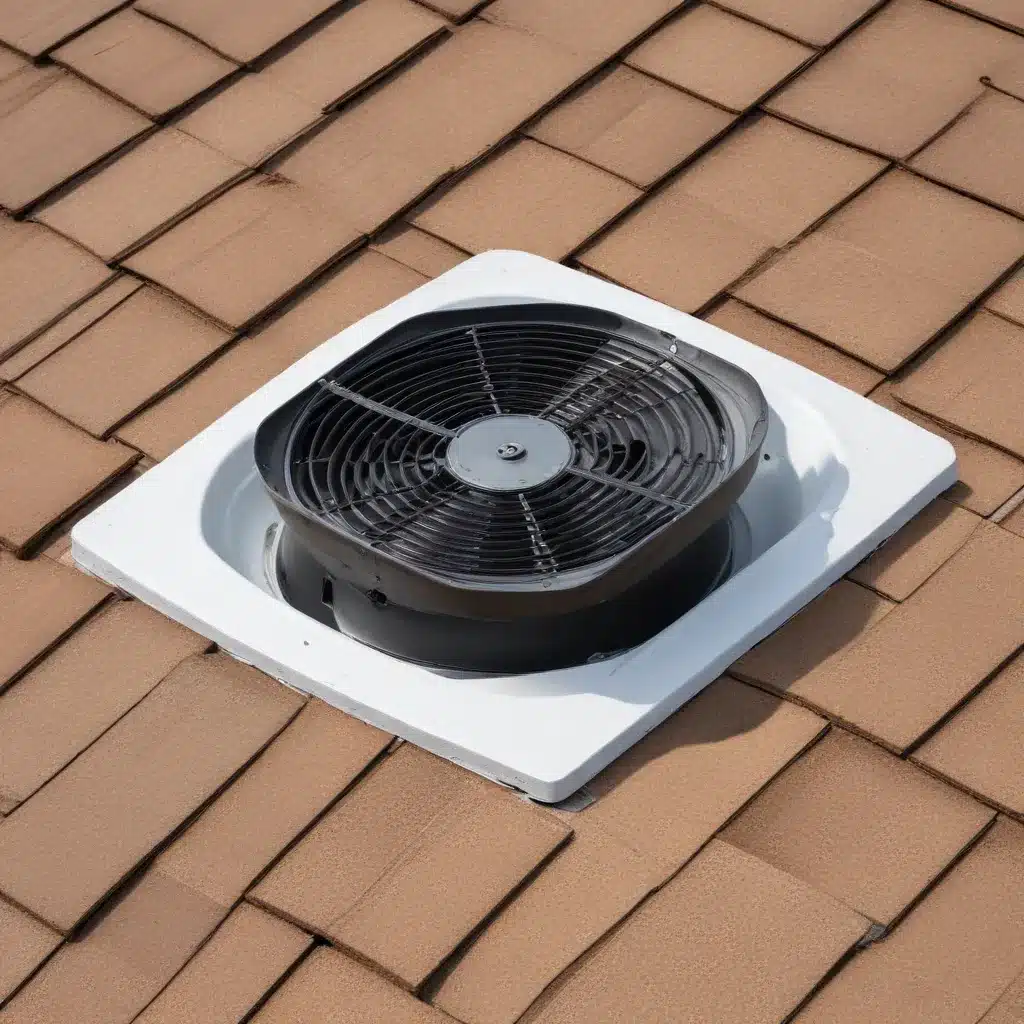
The Importance of Proper Attic Ventilation
Your attic plays a critical role in the overall health and efficiency of your home. Inadequate attic ventilation can lead to a host of problems, from poor indoor air quality to excessive energy costs. As a seasoned roofing professional, I’m here to share practical insights on how proper roof ventilation can transform your living environment.
Understanding the Science Behind Attic Ventilation
Attics are vulnerable to extreme temperature fluctuations throughout the year. During the summer, the sun’s heat radiates onto the roof, transferring warmth into the attic space. Without proper ventilation, this hot air becomes trapped, leading to scorching temperatures. In the winter, warm air from your living space naturally rises and can seep through cracks and leaks into the attic. This warm, moist air can then condense on cooler attic surfaces, resulting in moisture buildup and creating a breeding ground for mold and mildew growth.
The Benefits of Proper Attic Ventilation
-
Improved Indoor Air Quality: Effective attic ventilation helps combat the twin threats of heat and moisture. By allowing hot, stagnant air to escape, ventilation keeps the attic cooler in the summer, preventing that heat from radiating into your living space and overburdening your air conditioning system. More importantly, ventilation helps remove excess moisture from the attic, inhibiting the growth of harmful mold and mildew. Breathing in mold spores can trigger allergic reactions, respiratory issues, and even asthma attacks, making a well-ventilated attic crucial for a healthier home environment.
-
Enhanced Energy Efficiency: A poorly ventilated attic can have a direct impact on your energy bills. The intense heat buildup in an under-ventilated attic forces your air conditioning system to work overtime to maintain a comfortable temperature in your living spaces. Proper ventilation helps keep the attic cooler, reducing the heat load on your AC unit and resulting in lower energy consumption and potentially lower electricity bills. In the winter, effective ventilation can also prevent the formation of ice dams on your roof, which can cause leaks and costly damage if left unchecked.
Types of Attic Ventilation
There are two main types of attic ventilation systems:
-
Intake Vents: These vents, typically located at the soffits (underneath the eaves), allow cool outside air to enter the attic.
-
Exhaust Vents: These vents, usually positioned at the roof peak or ridge, allow hot, humid air to escape the attic.
The combination of intake and exhaust vents creates a balanced ventilation system, ensuring a steady flow of air through the attic and mitigating the buildup of heat and moisture.
Identifying Signs of Inadequate Attic Ventilation
As a roofing professional, I’ve encountered many homes with suboptimal attic ventilation. Here are some telltale signs that your attic may not be properly ventilated:
-
Excessive Attic Heat: If you notice that your attic space becomes uncomfortably hot, especially during the summer months, it’s a clear indication that your ventilation system may be inadequate.
-
Moisture Buildup: Condensation on the attic surfaces, the presence of mold or mildew, or even ice dams forming on the roof during the winter are all signs of excess moisture in the attic, which is often a result of poor ventilation.
-
High Energy Bills: As mentioned earlier, a poorly ventilated attic can lead to increased energy consumption as your HVAC system struggles to maintain a comfortable temperature in your living spaces.
-
Damaged Roof or Attic Insulation: Prolonged exposure to heat and moisture can deteriorate roofing materials and compromise the effectiveness of your attic insulation over time.
If you notice any of these signs in your home, it’s essential to have a qualified roofing contractor assess your attic ventilation and recommend the appropriate solutions.
Optimizing Attic Ventilation for Maximum Benefits
Ensuring proper attic ventilation is an investment that pays dividends in the long run. By improving indoor air quality and reducing energy consumption, you’ll create a healthier, more comfortable, and more energy-efficient home for yourself and your family. Here are some key steps to optimize your attic ventilation:
-
Assess Your Ventilation System: Work with a reputable roofing contractor to evaluate the current state of your attic ventilation. They can identify any imbalances or deficiencies in your intake and exhaust vents and recommend the appropriate solutions.
-
Upgrade or Install Ventilation Components: Depending on the assessment, you may need to install additional intake or exhaust vents, replace aging components, or even consider more advanced ventilation technologies, such as powered attic fans or solar-powered vents.
-
Maintain Your Ventilation System: Regular inspection and maintenance of your attic ventilation system are crucial to ensuring its long-term effectiveness. Clear any obstructions, such as debris or insulation, from the vents, and address any issues promptly to avoid more extensive problems down the line.
-
Prioritize Energy Efficiency: When upgrading your ventilation system, look for components that not only improve air flow but also contribute to energy efficiency. This could include features like insulated ductwork, energy-efficient fan motors, or solar-powered vents that reduce your reliance on electrical power.
By partnering with a knowledgeable roofing contractor and taking a proactive approach to attic ventilation, you can transform your home’s indoor air quality, energy efficiency, and overall comfort. Remember, a well-ventilated attic is the foundation for a healthier, more sustainable living environment.
For more information on our roofing services and how we can help optimize your home’s ventilation, visit Roofers in Northampton. Our experienced team is dedicated to providing customized solutions that meet your unique needs and ensure the long-term performance and durability of your roof.

